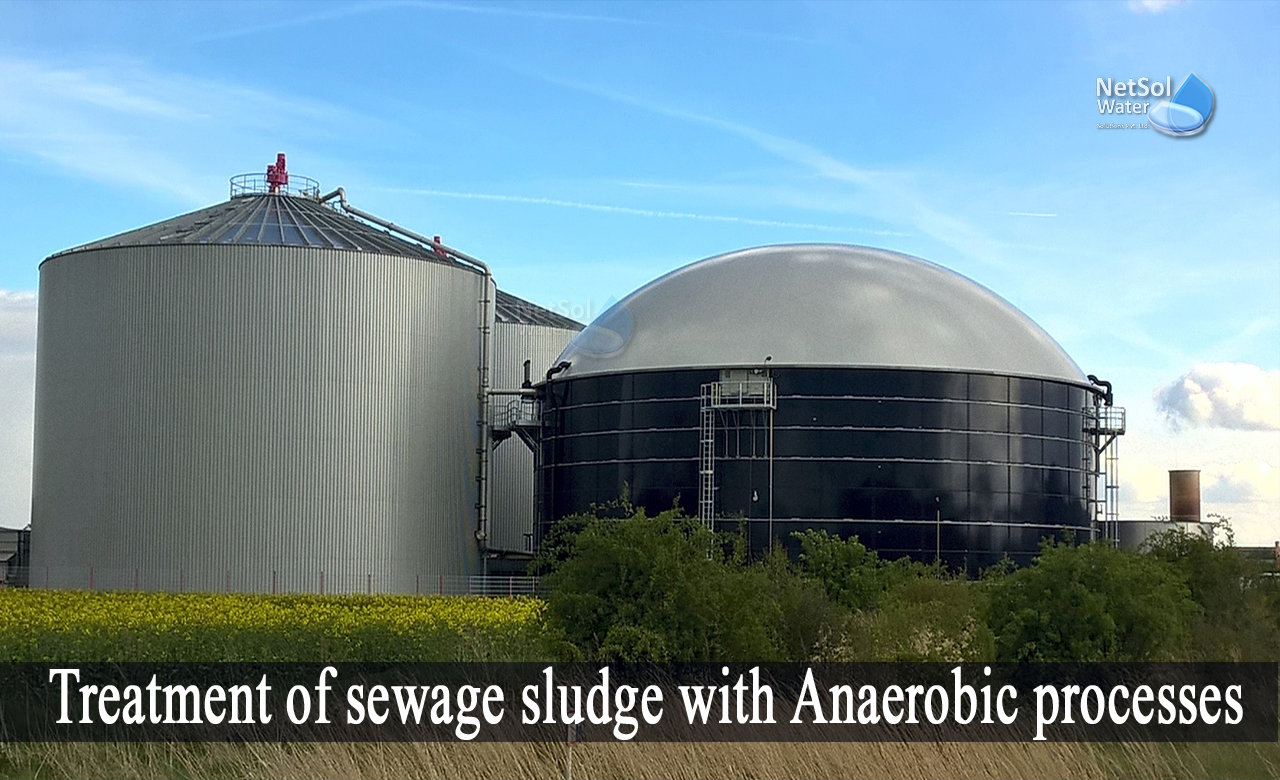How to treat sewage sludge with Anaerobic processes?
One of the most popular methods for stabilizing wastewater treatment plant sludge is anaerobic digestion. Anaerobic digestion is a vital step of sludge treatment before drying and incineration, because it can lower the amount of organic matter by up to 50%, enhancing the post-treatment procedure and reducing expenses. Additionally, the methane-rich biogas that is produced can be used as a source of energy.
In this blog, we will see how sewage and wastewater sludge is treated using anaerobic processes.
Anaerobic digestion can be run either ways-
1: At elevated or thermophilic temperatures (49–57°C), or
2: At moderate or mesophilic temperatures (30–39°C, ideal range).
Depending on the intended results in terms of biogas generation and composition, solids reduction, and energy efficiency, the exact ideal temperature within these ranges will vary.
Psychrophilic operation is defined as operation at or below 20°C. Such low operating temperatures may result in more energy-efficient operation. But, because lower temperatures result in slower biochemical reaction rates, and faster biogas production rates, the size of the tank is increased proportionately.
Types of anaerobic sludge digestion
There are two varieties of the anaerobic sludge digestion methods in use today:
1: High rate digestion
It is achieved with pre-thickening of raw sludge, thorough mixing, heating, and uniform feeding of raw sludge.
2: Low rate digestion
In terms of volatile solids, sludge feeding or organic loading rate (OLR) is indicated.
For low rate digestion, it is typically 0.5–0.6 kg VS/m3/day; while for high load digestion, it is 3.2–7.2 kg VS/m3/day. The average retention period is one month. The HRT and the magnitude of each of the three anaerobic digestion-related reactions,are correlated with one another.
Working of the anaerobic digestion process for sewage sludge treatment
There are two key stages in the process of treating wastewater sludge, from primary and secondary treatment procedures.
Stage 1:In order to speed up biological conversion, all incoming sludge flows are blended in the first stage, and heated to a mild temperature, for 10-20 days.
Stage 2:The combination is given more time to digest in the second tank. Active mixing is no longer required to encourage separation, nor is heating required, because the process produces heat on its own.
Stage 3:The settling sludge is thickened and dewatered further. The objective is to reduce the amount of materials, by separating as much water as you can. Sludge stabilization, the final phase, eliminates disagreeable odours, lowers the risk of putrefaction, and lowers the pathogen content of the residual solids.
Approximately 40 to 60 % of the organic materials are ultimately converted to methane (CH4) and carbon dioxide, during the process. The gas has 60–65% methane content and 30–35% carbon dioxide content, and traces amounts of H2, N2, H2S, and H2O. The remaining organics has a low concentration of pathogens, is chemically stable, and is almost odourless.
Sludge Dewatering
The sludge is thickened in order to lower its volume, which may be significantly decreased.
Sludge typically has a 1% solid proportion. If it is thickened by 10%, the volume is reduced by a factor of 10, while thinning it by 2% reduces the volume by half.
Sludge dewatering techniques
- Gravity thickening. This can achieve up to 10% solid fraction.
- Thickening by gravity belt. It can achieve up to 6% solid fraction.
- Flotation using dissolved air. It can achieve up to 6 % solid fraction.
- Centrifuge for thickening. It can achieve up to 8% solid fraction.
Advantages of anaerobic process for sludge treatment
· Production of CH4 as an extra energy source.
· Reducing organic debris and enhancing subsequent treatments.
· The leftover sludge can be applied to the soil to improve it.
· Decreases the emission of greenhouse gas methane from landfills.
Manufacturers of anaerobic digesters for sludge treatment in India
Our team at Netsol Water offers 24/7 support and service, in addition to a portfolio of complete water and wastewater treatment equipment’s, as well as aerobic and anaerobic sludge treatment equipment’s. To ensure that customers' demands and business standards are met, our team collaborates with clients all over the world.



